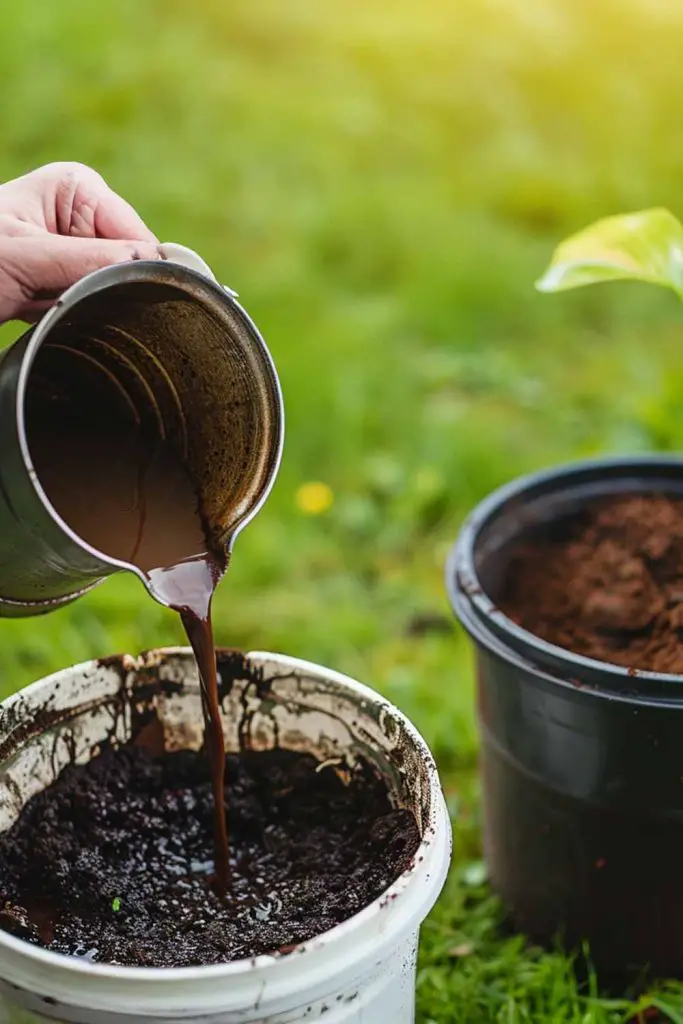How To Make Your Own Compost Tea And Which Plants Love It!

Compost tea has become a beloved resource for gardeners looking to give their plants a nutrient-rich boost. If you’re interested in creating your own compost tea and understanding which plants will benefit from it, this guide is for you.
Let’s dive into the process, exploring the essential steps, different methods, and the types of plants that will thrive with this homemade brew.
What is Compost Tea?
Compost tea is a liquid solution made by steeping compost in water to extract its nutrients and beneficial microorganisms. This concentrated liquid can be used to nourish plants and improve soil health.
The “tea” is typically applied to plants as a foliar spray or a soil drench, providing a natural way to promote plant growth and enhance microbial activity in the soil.
Benefits of Using Compost Tea
Compost tea offers a range of benefits for your garden:
- Improved Soil Health: It enriches the soil with beneficial microbes, which in turn enhance nutrient availability for plants.
- Disease Resistance: The microbes in compost tea can help ward off plant diseases by outcompeting harmful pathogens.
- Enhanced Plant Growth: The nutrients and hormones in compost tea stimulate plant growth and development.
- Eco-Friendly: Compost tea is a sustainable and organic alternative to synthetic fertilizers and pesticides.
Gathering the Materials
To make your own compost tea, you’ll need the following materials:
- High-Quality Compost: Choose a well-decomposed compost that is free of chemicals or contaminants.
- Water: Use non-chlorinated water. If tap water is your only option, let it sit for 24 hours to allow the chlorine to dissipate.
- Bucket or Barrel: A large container to brew the tea.
- Aerator or Pump: Optional but recommended for aerobic compost tea.
- Cheesecloth or Fine Mesh Bag: To strain the tea.
Choosing Your Brewing Method
There are two main methods for making compost tea: aerobic and anaerobic.
- Aerobic Method: This method involves oxygenating the tea with an aerator or pump, promoting the growth of beneficial microbes. It typically requires 24-48 hours of brewing.
- Anaerobic Method: This method doesn’t use aeration and relies on a longer brewing period (up to a week). It can produce a more pungent tea but is easier for those without aeration equipment.
Step-by-Step Guide to Making Compost Tea
Follow these steps to create your own compost tea:
Aerobic Method:
- Fill the Bucket: Add water to your bucket, filling it about two-thirds full.
- Add Compost: Place compost in a mesh bag or cheesecloth, then submerge it in the water.
- Oxygenate: Use an aerator or pump to introduce oxygen into the water. Let it run continuously.
- Brew: Allow the tea to brew for 24-48 hours, stirring occasionally.
- Strain and Apply: Remove the compost bag and strain the tea. Use it immediately as a foliar spray or soil drench.
Anaerobic Method:
- Fill the Bucket: Add water and compost to the bucket, mixing well.
- Cover and Wait: Cover the bucket with a lid and let it sit for 5-7 days. Stir occasionally.
- Strain and Apply: Strain the tea through cheesecloth and use it immediately.
When and How to Apply Compost Tea
Compost tea can be applied in several ways, depending on your plants’ needs:
- Foliar Spray: Use a spray bottle to apply the tea to leaves, stems, and buds. Best done in the morning or evening to avoid sunburn.
- Soil Drench: Pour the tea around the base of plants, allowing it to soak into the soil.
- Frequency: Apply compost tea every 1-2 weeks during the growing season for optimal results.
Plants That Love Compost Tea
Compost tea can benefit a wide range of plants, including:
- Vegetables: Tomatoes, peppers, lettuce, and cucumbers respond well to compost tea.
- Herbs: Basil, parsley, and mint thrive with regular compost tea applications.
- Flowers: Roses, marigolds, and sunflowers enjoy the nutrient boost.
- Fruit Trees: Apple, peach, and citrus trees can benefit from compost tea applied around the drip line.
Tips for Success with Compost Tea
To get the most out of your compost tea, consider these tips:
- Use Fresh Compost: Older compost may have lost its microbial activity.
- Avoid Overapplication: While compost tea is beneficial, too much can cause nutrient imbalances.
- Store Properly: If you need to store compost tea, do so in a cool, dark place, but use it within a few days.
- Monitor Plant Response: Observe how your plants respond to compost tea and adjust the frequency of application as needed.
Troubleshooting Common Problems
If you encounter issues with compost tea, here are some common problems and solutions:
- Foul Odor: This may indicate anaerobic conditions. Ensure adequate aeration or reduce the brewing time.
- Poor Results: If your plants don’t seem to benefit, check your compost source and brewing process for potential issues.
- Algal Growth: If algae forms on the surface, consider reducing the brewing time or increasing aeration.
With this guide, you have the knowledge to create your own compost tea and use it to enhance your garden’s health and productivity. By following these steps and understanding which plants will thrive with compost tea, you’re on your way to becoming a compost tea expert!

More interesting articles you may be interested in reading:

